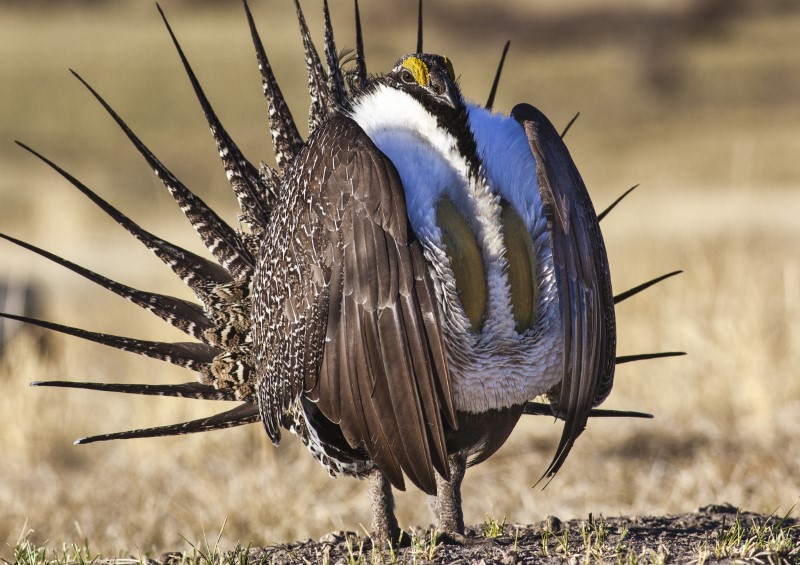 © Reuters. U.S. Bureau of Land Management photo of sage grouse
© Reuters. U.S. Bureau of Land Management photo of sage grouse(Reuters) – The U.S. Interior Department on Thursday proposed easing Obama-era protections for a bird, the greater sage grouse, to boost oil drilling and mining across Western states, a win for energy companies but a setback for conservationists.
The proposal, announced by the department’s Bureau of Land Management, fits within the Trump administration’s broader plan to increase energy production on federal lands by rolling back environmental regulation.
The BLM said the proposal would open up hundreds of thousands of acres of grouse habitat in states like Colorado and Utah to oil and gas leasing, allow for changes to grouse habitat boundary maps, and remove obstacles to new coal leasing.
Interior Department Deputy Secretary David Bernhardt, a Colorado native and a former energy lobbyist, said the proposals reflected the interests of Western States that host the chicken-sized prairie fowl, which is considered by conservationists to be a key indicator species for America’s dwindling sagebrush ecosystem.
“With today’s action we have leaned forward to address the various states’ issues, while appropriately ensuring that we will continue to be focused on meaningfully addressing the threats to the Greater Sage-Grouse,” he said.
Former President Barack Obama’s 2015 plan to protect the ground-dwelling bird imposed restrictions to development in their habitat, but in a concession to business groups fell short of placing them on the endangered species list – a move that would have imposed far more rigid rules.
But miners, oil drillers and ranchers in some Western states have said the plan unnecessarily hurt economic development.
Interior Secretary Ryan Zinke last year had ordered a review of protections for the sage grouse to “ensure conservation efforts do not impede local economic opportunities” – one of numerous reviews of Obama-era environmental protections launched by President Donald Trump’s administration.
Bobby McEnaney, a spokesman for the Natural Resources Defense Council, called the move a “bald-faced giveaway to the oil and gas industry.”
“This rolls back a conservation plan that was carefully crafted by states, ranchers, conservationists and public officials to protect this iconic Western bird and the unique sagebrush landscape it inhabits,” he said.
Sage grouse are now believed to number between 200,000 and 500,000 birds across 11 Western states and southern Alberta.
Fusion Media or anyone involved with Fusion Media will not accept any liability for loss or damage as a result of reliance on the information including data, quotes, charts and buy/sell signals contained within this website. Please be fully informed regarding the risks and costs associated with trading the financial markets, it is one of the riskiest investment forms possible.
Source: Investing.com



























